Did you know that millions of healthy trees are lost each year to preventable diseases? This startling fact, reported by the Forest Service, highlights a silent crisis threatening our communities and landscapes. While trees provide vital shade, cleaner air, and beauty, ignoring their health puts entire neighborhoods at risk. Tree disease treatment isn't just for arborists—it's an urgent responsibility for every homeowner and property manager. If you want to keep your green spaces thriving, recognizing and responding to tree disease threats early is your ultimate defense.
Startling Statistics: Why Tree Disease Treatment Is Urgent
- Astonishing fact: According to the Forest Service, millions of trees are lost each year to preventable diseases. Learn why swift action in tree disease treatment safeguards our communities and landscapes.
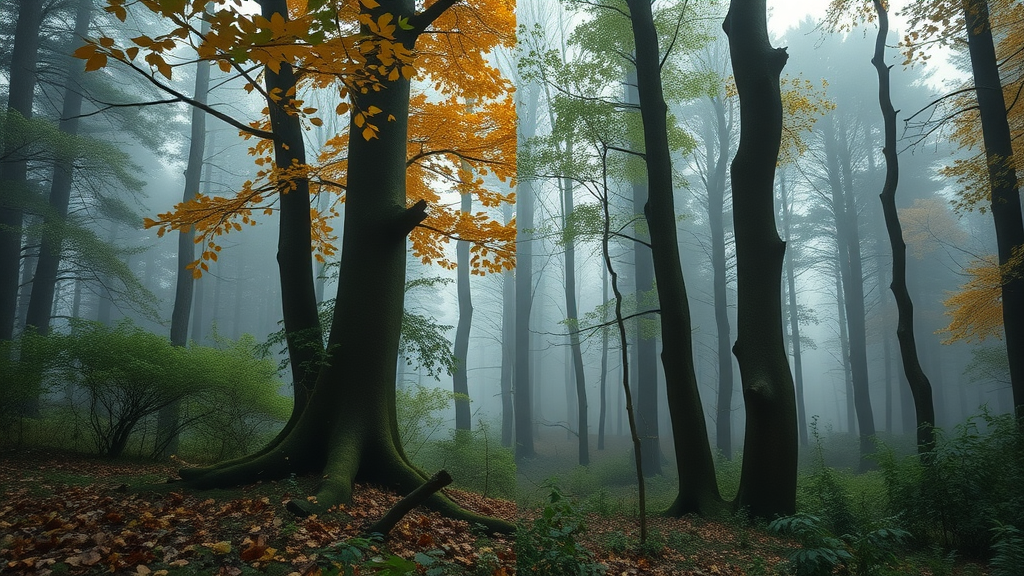
What You'll Gain: Mastering Tree Disease Treatment and Control
- Understand how to identify and treat common tree diseases.
- Learn best practices for tree disease control to prolong tree life.
- Discover how certified arborists approach disease management.
Understanding Tree Diseases: Basics of Tree Disease Treatment
What Causes Tree Disease and Why Treatment Matters
- Fungi, bacteria, viruses, insects, and environmental factors fuel common tree diseases.
- Relationship between stress and tree disease outbreaks.
Tree diseases are caused by a complex web of agents including fungi, bacteria, viruses, insects, and even environmental stressors like drought or poor soil. For example, the oak tree in your yard may fall victim to a fungal disease after a particularly wet season, while root rot sneaks up after improper watering practices. These agents exploit weaknesses in the tree’s natural defenses, spreading through root contact, wind, rain, insects, or contaminated pruning tools. Tree leaves showing signs and symptoms—from leaf spot to wilting—are often the first visible cues that something is amiss.
One critical trigger for tree disease outbreaks is stress. Stress from drought, compacted soils, or construction damage weakens a tree’s ability to fend off infestation or disease . When trees are stressed, their natural resilience drops, making them prime targets for disease and tree pests . That’s why rapid identification and professional tree disease treatment are vital—addressing the source early can prevent disease from spreading through your property or neighborhood.
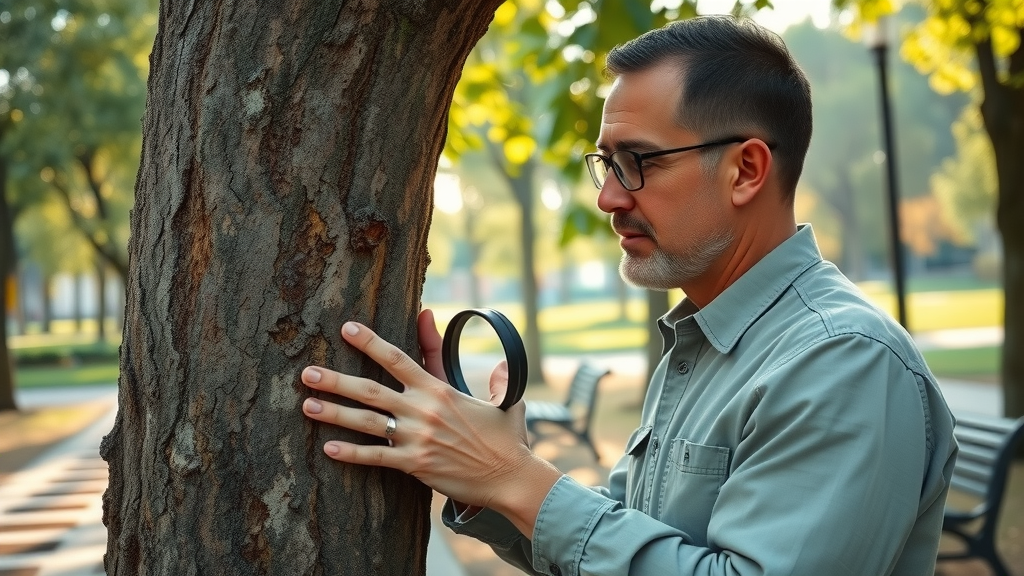
The Importance of Plant Health Care in Tree Disease Control
- Maintenance practices that reduce risk: pruning, watering, mulching.
- How plant health care supports ongoing tree disease treatment.
Effective plant health care is the cornerstone of tree disease control . Regular pruning, proper watering, mulch application, and soil management dramatically reduce the risk of common tree diseases . For instance, mulching keeps roots cool and moist, while proper pruning eliminates infected branches that can spread disease agents. Tree care must be strategic: overwatering leads to root rot , but underwatering stresses trees, leaving them susceptible to fungal disease and insect attacks.
Adopting an ongoing plant health care routine ensures healthier, more resilient trees that can naturally resist and recover from numerous threats. These proactive steps, when combined with timely disease treatment, offer robust protection for trees and shrubs both at home and in public spaces. Certified arborists stress the value of preventive care, reinforcing that investing in tree health today means avoiding expensive treatments and tree loss in the future.
Identifying Common Tree Diseases for Effective Tree Disease Treatment
Spotting Symptoms: From Tree Leaves to Tree Roots
- Common symptoms: leaf spots, wilting, cankers, and root rot.
- Early detection signs crucial to successful tree disease treatment.
Early detection of tree diseases is fundamental to successful intervention. Begin by observing tree leaves for signs and symptoms like yellowing, wilting, brown or black spots, curling edges, and premature leaf drop. These symptoms often signal fungal diseases such as powdery mildew or bacterial issues like fire blight . Look for cankers—dead, sunken patches on bark—which indicate internal infections that can girdle branches.
Don’t forget to check at ground level. Root rot reveals itself by stunted growth, dropping, or yellowing foliage, and a general lack of vigor. An infected branch or root often exudes a foul odor, has a soft, mushy texture, or may display visible fungal growth. Prompt recognition of these cues allows for targeted tree disease treatment , which can save affected trees and prevent the disease from affecting nearby deciduous trees and other ornamental species.
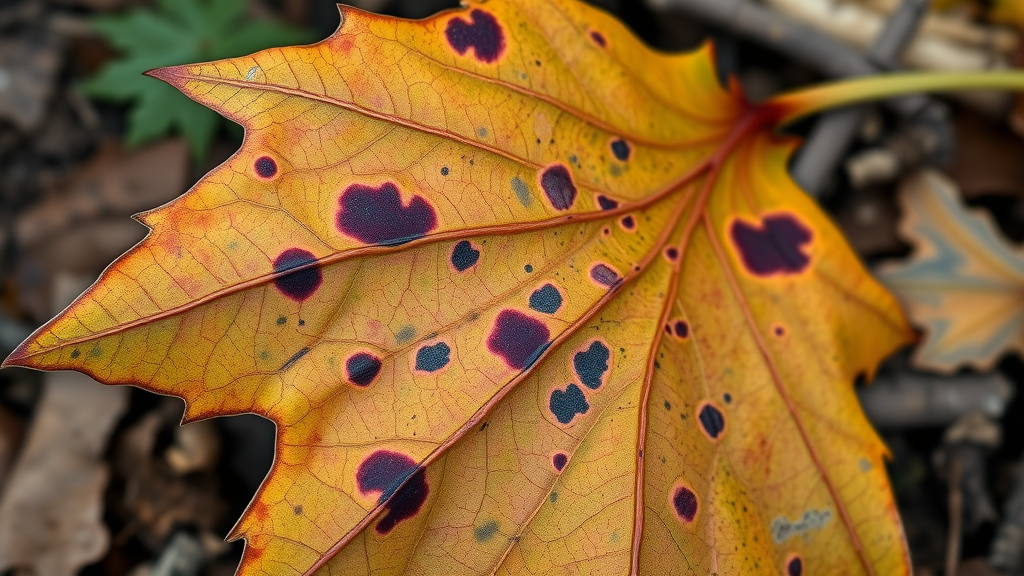
Tree Disease Table: Quick Reference for Tree Disease Control
| Disease Name | Causative Agent | Key Symptoms | Preferred Treatment | Preventive Measures |
|---|---|---|---|---|
| Fire Blight | Bacteria (Erwinia amylovora) | Blackened twigs, scorched leaves, ooze from bark | Prune infected branches, apply antibiotics | Prune during dormancy, sterilize tools |
| Powdery Mildew | Fungi (various species) | White powdery film on leaves, leaf curling | Fungicide spray, remove affected leaves | Increase air circulation, avoid overhead watering |
| Anthracnose | Fungi | Dark leaf spots, premature leaf drop | Remove infected debris, fungicides if severe | Prune for air flow, water at root zone |
| Root Rot | Fungi (Phytophthora, Armillaria) | Yellowing leaves, wilting, mushy roots | Improve drainage, remove diseased roots | Well-drained soil, avoid overwatering |
| Dutch Elm Disease | Fungi (Ophiostoma) | Wilting, brown streaks under bark | Prompt removal of diseased wood | Resistant varieties, vector control |
| Cedar Rusts | Fungi | Orange galls on branches/leaves | Remove galls, fungicide in spring | Resistant species, prune alternate hosts |
Top Threats: Common Tree Diseases Requiring Immediate Treatment
Fire Blight: Symptoms and Targeted Tree Disease Treatment
- Overview, visual indicators, and proactive disease control strategies for fire blight.
Fire blight is a notorious bacterial disease frequently affecting apple, pear, and some ornamental species. The most telling signs are twig tips turning black as if scorched by fire and a sticky bacterial ooze exuding from infected bark. Infected foliage and blossoms wilt rapidly, with tree leaves and shoots appearing burned. Early spring is prime time for fire blight attacks because new, tender growth is especially vulnerable to infection.
Control hinges on swift action: use sterilized pruning tools to remove infected wood at least twelve inches below the damage, and destroy all pruned material. Antibacterial sprays applied during bloom can also slow or halt the spread. Consistent, annual inspection—especially in wet springs—ensures rapid identification, making fire blight a manageable threat with dedicated tree disease treatment .
Powdery Mildew: Characteristics and Tree Disease Control Methods
- How powdery mildew impacts trees and shrubs, best removal and prevention practices.
Powdery mildew is one of the most common and easily recognized fungal diseases among deciduous trees and trees and shrubs . It appears as a powdery white film that rapidly covers tree leaves , leading to leaf curling, yellowing, and premature drop. While oak trees and maple trees are frequently affected, almost any susceptible plant can develop this unsightly infection.
Effective disease control for powdery mildew includes removing affected foliage, enhancing airflow through selective pruning, and applying fungicidal sprays as needed. Consistently monitor moisture and avoid overhead watering, which creates ideal conditions for spore germination. When powdery mildew threatens large landscapes, employing a certified arborist is the best bet for long-term management and prevention.
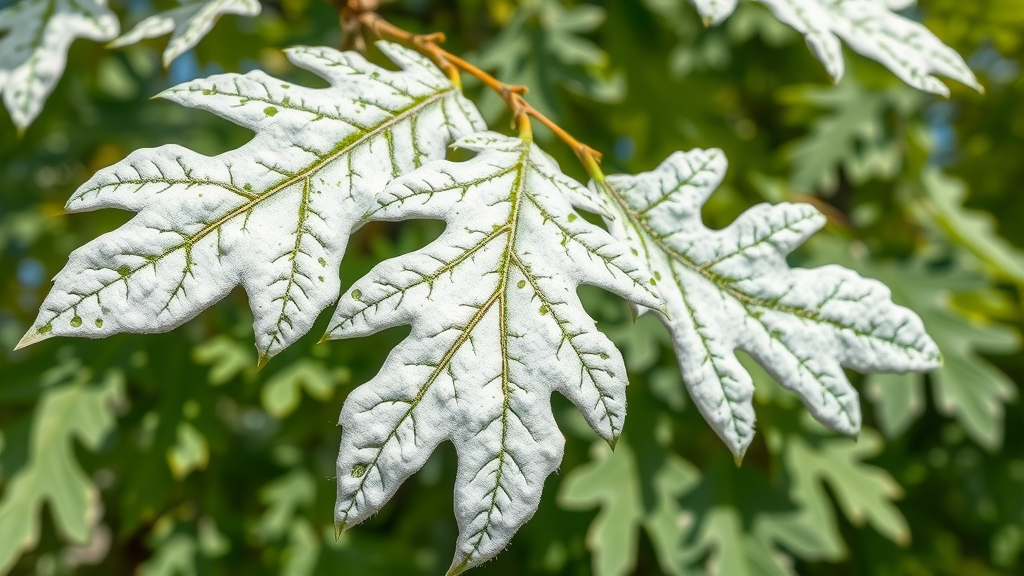
Root Rot: Recognizing and Responding to Tree Disease Threats
- Detecting root decay, consequences for plant health care, and treatment plans.
Root rot is a devastating tree disease caused primarily by waterlogged soil, poor drainage, and aggressive fungal agents like Phytophthora. Early signs include wilting during hot weather, yellow or brown foliage, stunted growth, and eventual dieback from below. Severely infected trees often display mushy, decaying roots and a pronounced decline in the ability to absorb water and nutrient essentials for healthy growth.
The first step in tree disease treatment for root rot is improving soil drainage and reducing irrigation frequency. Severely damaged roots must be pruned out and destroyed, and fungicide drenches may offer additional assistance, especially for high-value specimens. Keeping a close eye on soil conditions and practicing proper plant health care can help prevent this insidious disease from recurring in both residential and commercial landscapes.
Best Practices for Tree Disease Treatment and Disease Control
Integrated Approaches to Plant Health Care
- Steps for maintaining vigorous trees and shrubs to minimize susceptibility.
- How disease control fits into routine tree care.
The most effective tree disease control combines cultural, biological, and chemical strategies into a comprehensive plant health care plan. Routine care includes seasonal inspections , targeted pruning to promote airflow and light, careful fertilization to avoid overgrowth, and diligent soil management to keep roots healthy. Integrated pest management (IPM) is particularly essential in monitoring and addressing both tree pests and diseases in a coordinated manner. Applying mulch appropriately, testing soil regularly, and removing debris all contribute to a less hospitable environment for common tree diseases .
Prevention is always preferable to cure. By ensuring trees receive the right balance of water and nutrient , homeowners can make them less inviting to pathogens. Incorporating these steps into your standard tree care routine gives you the best chance for rapid recovery following minor disease outbreaks and reduces your reliance on chemical interventions.
Role of Certified Arborists in Tree Disease Control
- Why engaging certified arborists enhances outcomes in tree disease treatment.
- Case study: success story from a certified arborist.
Certified arborists are highly trained professionals with the expertise to diagnose, treat, and prevent the full spectrum of tree diseases . Their experience goes beyond basic tree care : they use advanced diagnostic tools, understand the subtle differences between similar diseases, and follow the most current protocols for safe and effective tree disease treatment . By engaging a certified arborist , property owners gain access to customized treatment options and invaluable advice for maintaining plant health care over the long term.
Consider the example of a city park plagued by fire blight . After multiple failed DIY attempts at control, a certified arborist was consulted. Through expert pruning, systemic treatments, and ongoing monitoring, not only were the infected trees saved; the total number of disease cases dropped dramatically in subsequent years. This demonstrates how partnerships with certified professionals can transform tree health outcomes.
"An ounce of prevention is worth a pound of cure – especially when it comes to trees." – Certified Arborist, National Arborists Association
When to Seek Tree Disease Treatment: DIY vs. Professional Help
Determining Severity: When Is Professional Tree Disease Treatment Needed?
- Key risk indicators that warrant expert tree care and intervention.
- Limits and risks of DIY tree disease control.
Not every diseased tree requires professional intervention, but knowing when to call an expert is essential. If you notice widespread dieback, deeply embedded cankers, advanced root rot , or persistent fungal growth despite DIY efforts, it’s time to seek a certified arborist . Risks of DIY mistakes include spreading disease with improperly sterilized tools, applying the wrong treatments, or misidentifying the problem—potentially turning a manageable issue into a tree-removal scenario.
Additional red flags include unexplained declines in mature trees, rapid symptom spread to neighboring plants, or suspected involvement of regulated pests and diseases. While basic disease control (like pruning a small, infected branch) may be handled safely by homeowners, complex cases demand the expertise and diagnostic resources available only to professionals specializing in tree disease treatment .
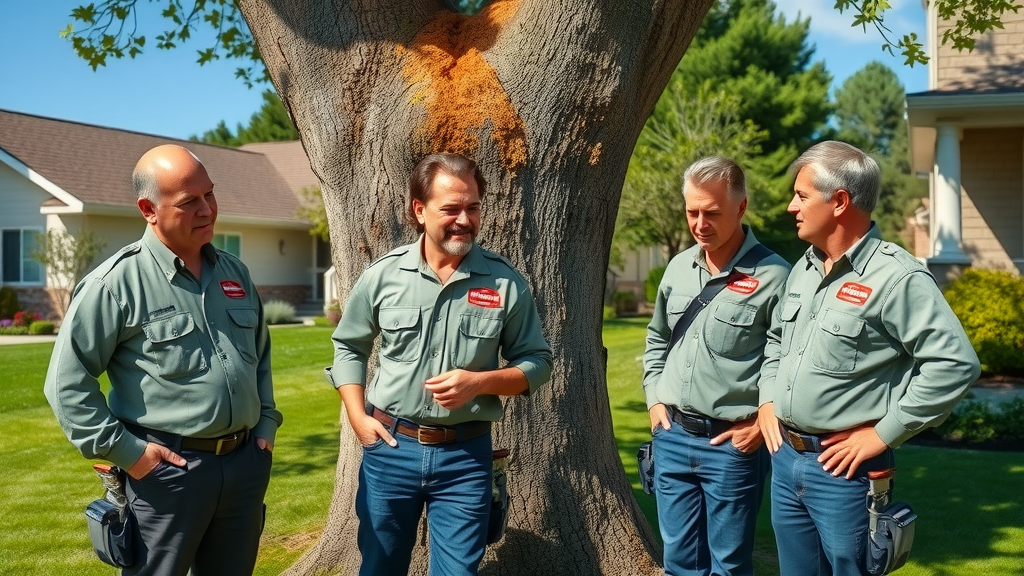
How Certified Arborists Diagnose and Treat Tree Diseases
- Professional diagnostic tools and systematic plant health care approaches.
Certified arborists employ a suite of scientific diagnostic tools—such as soil tests, laboratory pathogen analysis, magnification for fungal structures, and even digital imaging—to identify the exact nature of tree diseases . This precise diagnosis ensures tailored tree disease treatment plans, such as using the best fungicide, biological controls, or structural corrections. They also develop long-term monitoring strategies, guiding property managers and homeowners through effective plant health care routines.
Systematic evaluation helps distinguish between tree pests and pathogens or rule out abiotic factors (like nutrient deficiencies or pollution). By leveraging professional knowledge, certified arborists drastically increase the success rate for saving valuable trees and restoring entire landscapes to health.
Common Tree Disease Treatment Mistakes (and How to Avoid Them)
- Ignoring early symptoms
- Misidentifying diseases
- Improper use of fungicides or pruning techniques
Too often, property owners make costly errors in their quest for tree disease control . The most common mistakes include ignoring early warning signs (like spots on leaves or mild wilting), which allows disease to advance unchecked. Misidentifying common tree diseases leads to poor treatment choices: for instance, using a fungicide when the ailment is caused by bacteria, or pruning an infected branch incorrectly, which spreads disease further into the canopy.
Another frequent trap is the overuse or improper timing of fungicides—applying them when the pathogen is dormant, or worse, harming beneficial organisms. Working with a tree expert or certified arborist helps you sidestep these dangers and maintain lasting tree health through informed, safe techniques.
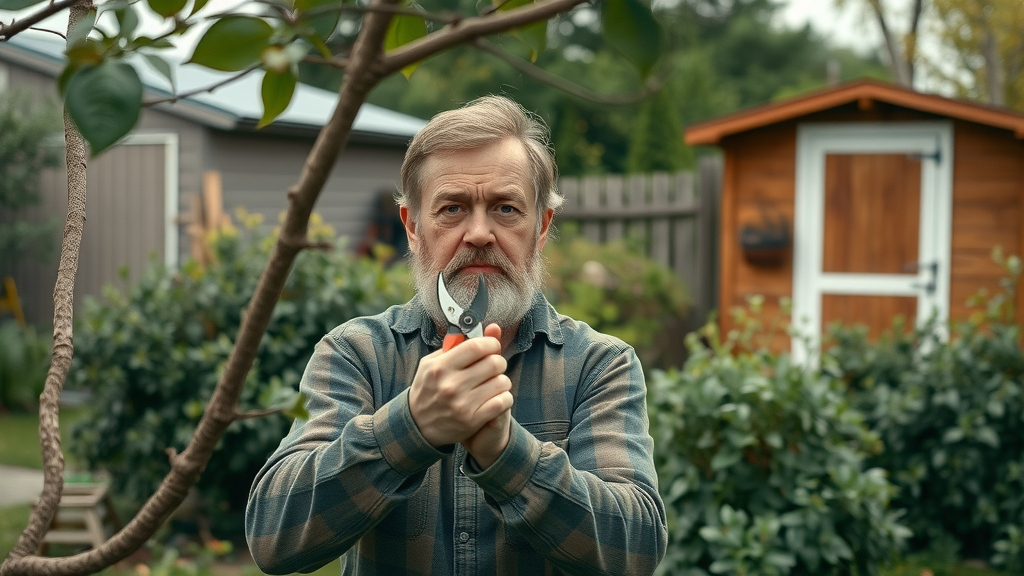
Preventative Steps: Keeping Trees and Shrubs Healthy
- Routine inspections and maintenance
- Soil management
- Selecting disease-resistant tree species
The most reliable defense against common tree diseases is prevention. Conduct regular inspections—especially in spring and fall—to spot symptoms early. Maintain healthy soil with organic amendments and test for suitable pH and nutrient levels. Invest in disease-resistant tree species when planting new trees or replacing lost specimens, particularly in areas prone to repeating disease cycles.
Routine maintenance includes removing fallen leaves (which often harbor spores), sanitizing tools between uses, and keeping an eye out for tree pest infestations that frequently accompany disease outbreaks. By following these steps, you lay a solid groundwork for robust, resilient trees and shrubs that weather disease threats for decades.
People Also Ask: Expert Answers on Tree Disease Treatment
Can a diseased tree be saved?
- In many cases, diseased trees can be restored with early intervention using targeted tree disease treatment and proper disease control practices.
Saving a diseased tree often hinges on how quickly its symptoms are spotted and addressed. By applying targeted tree disease treatment at the first sign of trouble and practicing consistent plant health care , homeowners can restore health to many affected trees and avoid full removal.
How to get rid of diseased trees?
- Severely affected trees may need to be removed by certified arborists to prevent the spread of diseases to healthy trees and shrubs.
For trees beyond recovery, safe removal is essential to protect the landscape. Certified arborists can safely take down diseased specimens and recommend replacement with disease-resistant tree species to minimize future risk.
What is the most common disease for trees?
- Powdery mildew and root rot are among the most widespread and damaging tree diseases requiring dedicated tree disease treatment.
Powdery mildew and root rot are frequent threats to ornamental and landscape trees. Regular tree care and prompt disease control measures offer the best protection against these and similar common tree diseases .
What does a tree fungus look like?
- Tree fungus can appear as white, gray, or orange spots, mushrooms, or powdery films on tree leaves, bark, or roots.
Fungal disease can manifest in many ways depending on the species. Watch for white, gray, or orange spots on tree leaves and bark, mushroom clusters at the base, or fine powdery growth anywhere on the plant. Early visual inspection helps guide the next steps in tree disease treatment .
Tree Disease Treatment in Action: Video Demonstrations
- 1. Identifying fire blight and applying treatments
- 2. Root rot assessment and soil care strategies
- 3. Step-by-step powdery mildew removal
Sometimes seeing is believing. Check online for video tutorials depicting tree disease treatment in real conditions—how to spot fire blight during bloom, conduct effective root rot assessments, and perform thorough yet gentle removal of powdery mildew from oak trees , maples, and fruit trees.
Frequently Asked Questions About Tree Disease Treatment
- What are the first signs of a sick tree?
- Is tree disease treatment always successful?
- How do I choose the right product for tree disease control?
- Can tree pests spread disease between trees?
- Which environmental factors increase tree disease risk?
What are the first signs of a sick tree? Initial warning signs usually include unusual leaf coloration, premature drop, visible cankers, and slowed growth. It’s important to act on these symptoms quickly to stop disease progression.
Is tree disease treatment always successful? Treatment success depends on early detection, correct diagnosis, and consistent application of recommended care and disease control strategies.
How do I choose the right product for tree disease control? Consult a certified arborist or follow extension service guidelines to ensure purchased products target the right pathogen and are applied safely for your types of plants .
Can tree pests spread disease between trees? Absolutely. Many tree pests , such as bark beetles and aphids, act as vectors by carrying spores or bacteria from one specimen to another.
Which environmental factors increase tree disease risk? Poor drainage, overcrowding, inadequate airflow, and prolonged periods of wet or cold weather all contribute to increased vulnerability to common tree diseases .
Pro Tips for Long-Term Tree Disease Control and Plant Health Care
- Schedule seasonal tree care inspections
- Keep soil healthy and well-drained
- Apply mulch and fertilize appropriately
- Monitor for tree pests regularly
- Maintain up-to-date pruning and sanitation
These steps, championed by leading tree expert s and certified arborists , offer a blueprint for lasting disease prevention. Committing to plant health care and vigilant monitoring is your strongest safeguard against threats old and new.
Key Takeaways for Effective Tree Disease Treatment
- Early identification is crucial for treatment success
- Integrated care from certified arborists boosts outcomes
- Preventative practices can stop many diseases before they start
Prioritize these key principles to maximize the effectiveness of your tree disease control and safeguard the beauty and health of your landscape.
A Path Forward: Encourage Proactive Tree Disease Treatment
- Take charge of your tree health today by implementing regular inspections, collaborating with certified arborists, and applying comprehensive tree disease treatment methods to safeguard your landscape for generations.
Actionable Next Steps: Schedule a professional tree inspection, update plant health care routines, and actively monitor for signs and symptoms—your vigilance will help protect your trees and community for years to come.
To deepen your understanding of tree disease treatment, consider exploring the following resources:
-
“7 Common Tree Diseases and How to Fix Them” : This article provides insights into prevalent tree diseases, including anthracnose, and offers practical treatment methods. ( bobvila.com )
-
“10 Common Tree Diseases and How to Treat Them” : This resource outlines various tree diseases such as cankers and powdery mildew, detailing their symptoms and effective treatment strategies. ( bayareatreespecialists.com )
These articles offer valuable information to help you identify and manage common tree diseases effectively.
 Add Row
Add Row  Add
Add 


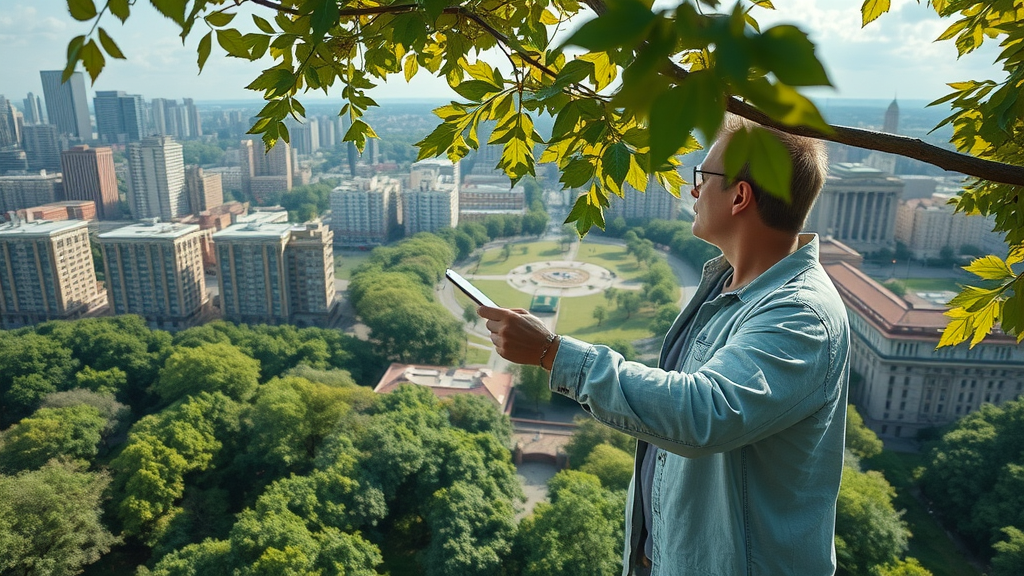

Write A Comment